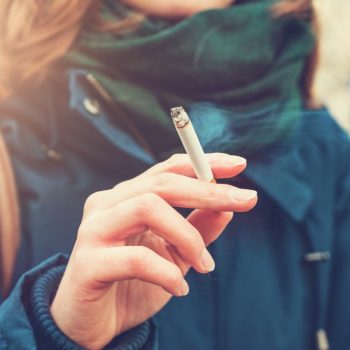Smoking is harmful and it is so in various forms. Certainly when smokers inhale it, but also when non-smokers inhale it. There is, however, another potentially dangerous form: third hand smoke. Residues of toxic substances remain on the surfaces of the rooms in which there has been smoke: “It is a relatively new concept, on which research is still working to fully define harmful effects on health. However, according to the indications emerging from the published works, it is possible to use this aspect to induce smokers to stop smoking,” recalls Dr. Licia Siracusano, an oncologist and contact person at Humanitas Cancer Center’s Smoking Control Centre.
Passive smoking also increases the risk of cancer
Cigarette smoking is one of the main health risk factors. The cardiovascular and respiratory system, but also the osteo-articular system and skin can suffer the harmful consequences of exposure to smoking. Mortal diseases such as myocardial infarction and stroke see smoking as a clear risk factor, as does lung cancer. Between 85% and 90% of all diagnoses of this neoplasia are related to cigarette smoking.
According to the Italian Association of Medical Oncology, even non-smokers exposed to passive smoking have an increased risk of lung cancer. Those around people who smoke breathe passive smoke from both the smoke exhalations of smokers and the smoke from a lit cigarette, with all the toxic substances contained: from nicotine to formaldehyde to carbon monoxide.
Hundreds of chemical compounds
When smoking indoors, smoke from combustion can contaminate the surfaces: curtains and carpets, furniture, furniture, walls, car upholstery and even smokers’ clothes. This is the third hand smoke on which research has focused its attention in recent decades.
According to the American Thoracic Society, there are two hundred and fifty chemicals contained in third hand smoke. These are the chemical compounds that accumulate over time in indoor environments and that could interact with air pollutants, representing a potential danger especially for very young children. They tend to put in their mouths the objects they come into contact with, catching and spending a lot of time in the arms of adults. As emerged from a research published in Tobacco Control in 2004, in the urine of children living in homes where smoking is allowed inside, there are higher levels of cotinine, a metabolite of nicotine used as a marker of the degree of exposure to smoking.
The link between cancer risk and third hand smoking has not yet emerged, as the American Cancer Society recalls. Scientists are working to define the association, for example a 2013 research published in Mutagenesis indicated that third hand smoke can damage the DNA of human cells tested in the laboratory.
In any case, how can exposure to smoking be limited in all its forms? “Those who smoke should never smoke at home and those who do not smoke should not allow anyone to light cigarettes indoors, even more so if there are children,” says Dr. Siracusano. “While awaiting new indications from the field of research, it is still possible to mention third hand smoking and its potential negative effects in order to convince smokers to stop smoking. For example, two studies published on Pediatrics in 2009 and 2014 have indicated the following: emphasizing that third hand smoking can be harmful to children’s health can be an important element in encouraging the ban on smoking at home or in cars. Raising parents’ awareness of the risk associated with third hand smoking can therefore help to achieve positive results in the fight against smoking,” concludes the specialist.










